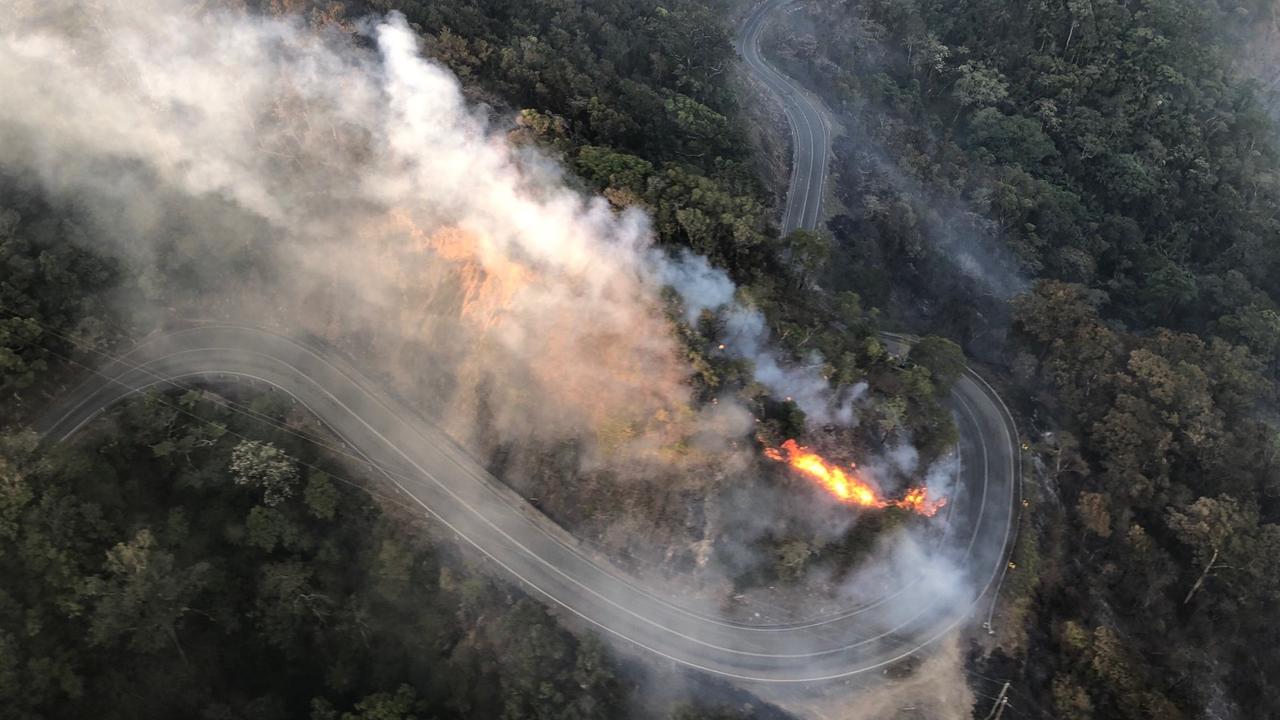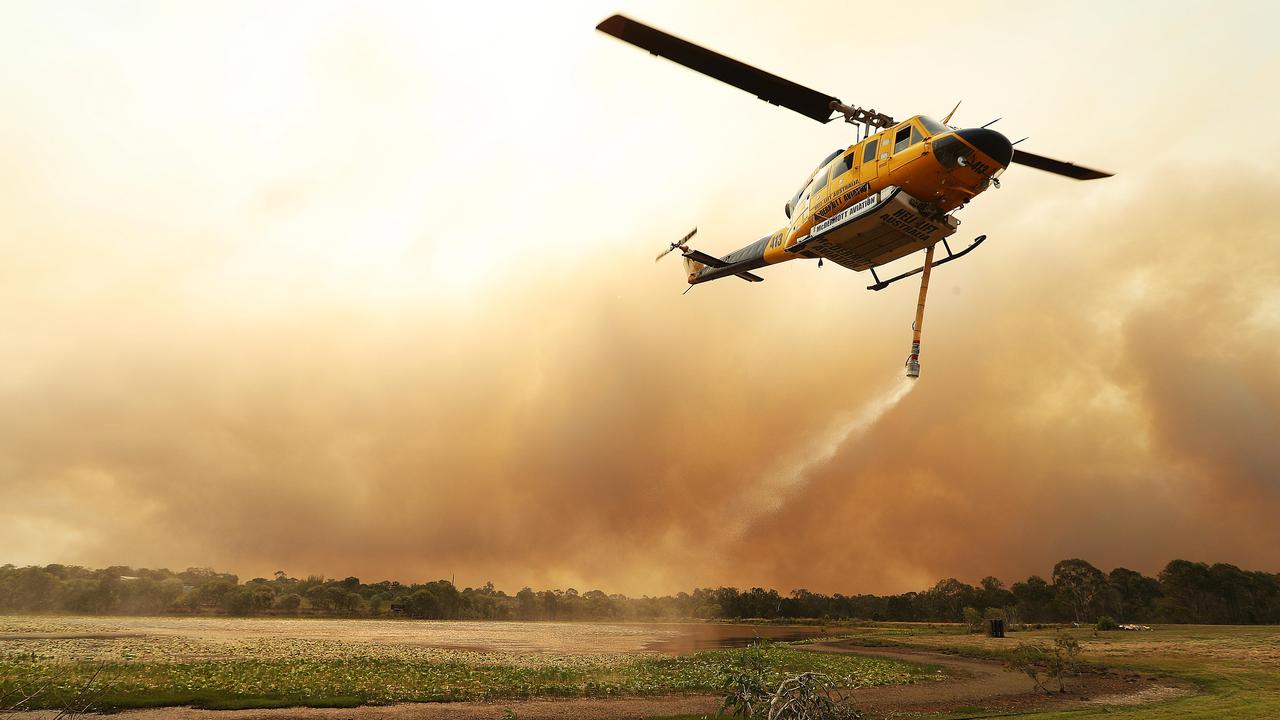Two smaller blazes united in catastrophe
THE inferno that raged through the Blue Mountains west of Sydney, was a confluence of two smaller blazes.
THE inferno that raged through the Blue Mountains west of Sydney, destroying at least 81 homes, was a confluence of two smaller blazes that began sweeping quickly through the region on Thursday.
NSW Rural Fire Service Deputy Commissioner Rob Rogers yesterday provided an anatomy of that catastrophe, as well as of the fires that have devastated parts of the central coast, north of Sydney.
The first of the Blue Mountains fires ignited east of one of the largest towns, Lithgow, burning east along the twisting Bells Line of Road towards Richmond.
"That one started spotting well ahead of itself," Mr Rogers told The Weekend Australian.
"It jumped over Bells Line of Road and, while that was happening, we then had a new fire start in the Springwood area (to the south), which developed very, very quickly, spotting a lot, and we very quickly started to see impact on property. We saw it very early and sent a helicopter, but it burned too aggressively and too strong, through to the bottom of Winmalee and Yellow Rock.
"Meanwhile, the winds got to the point where all of our helicopters were grounded on the Lithgow fire with wind gusts over 90km/h, and it continued to burn that evening."
About a third of the devastated area had been examined, 81 homes confirmed destroyed last night and another 37 damaged.
Yellow Rock, the scene of extraordinary destruction, had not been formally assessed for damage.
The central coast fire that started at Ruttleys Road, Doyalson, also started very quickly and burned south towards Lake Monmurah, where 63-year-old retiree Walter Linder died on Thursday. "That fire destroyed a service station which was a local landmark, the Big Prawn, and the fire burned all the way up to Catherine Hill Bay, destroying property and possibly the surf club, we're not sure," Mr Rogers said.
"That fire is still surging up, and the fires at Port Stephens (north of Newcastle, where property has been destroyed) are as well.
"We've also got fires at Muswellbrook (in the Upper Hunter) and Wingecarribee (in the southern highlands, where there are also reports of property losses)."
Mr Rogers predicted milder wind conditions today, but said a fire at Faulconbridge, in the Blue Mountains, could continue to burn "aggressively" because of the mountains' steep incline.
"Port Stephens is also still going to be a problem for us."
Weatherwatch meteorologist Don White said dryness in the air had contributed significantly to the conditions, which he forecast would subside over the weekend before re-emerging early next week. "The catastrophic and extreme conditions we've seen in the last five days are unlikely to be repeated in NSW, probably for the rest of the season," he said.
"It's typical of climate change, a warmer world means greater variability of weather.
"That's what we're seeing now, and it's likely to continue."
"At Sydney Airport, humidity levels have dropped below 10 per cent three times in the last eight days; we usually only see humidity levels around 10 per cent occur once every four or five years."
Mr White said his greatest ongoing bushfire concern was for northeast NSW and southeast Queensland, where a dry winter and severe summer thunderstorms could prove a deadly mix. He noted that, paradoxically, Canberra recorded its coldest October temperature yesterday, at -3.4C.




